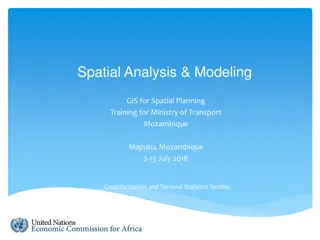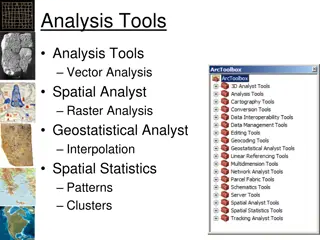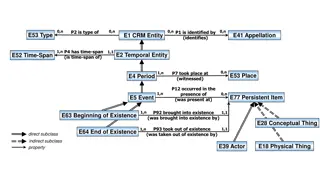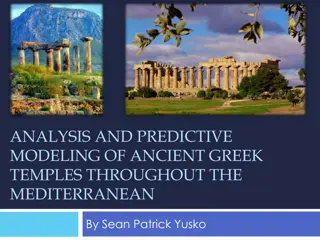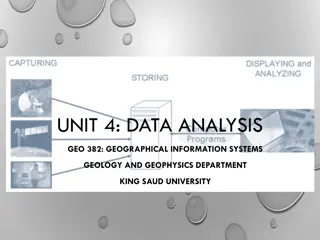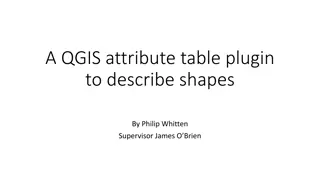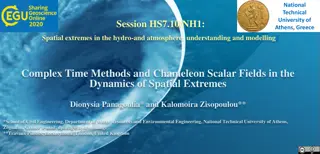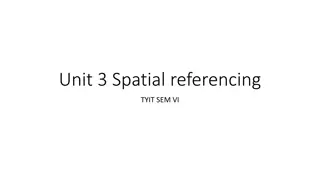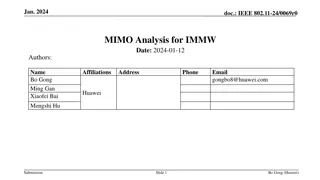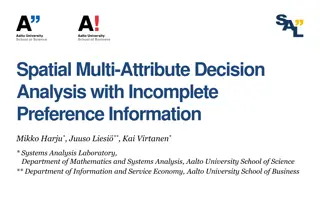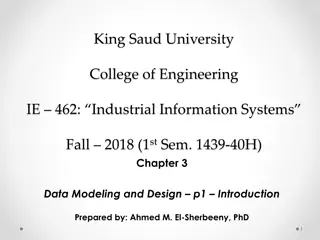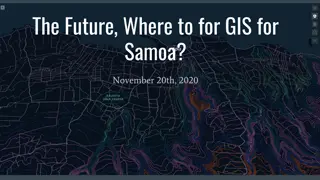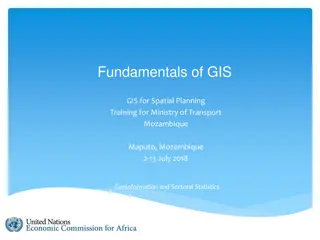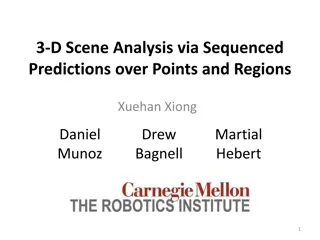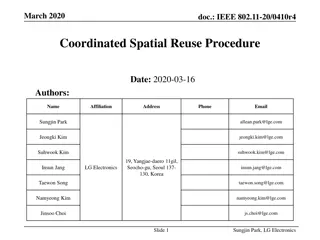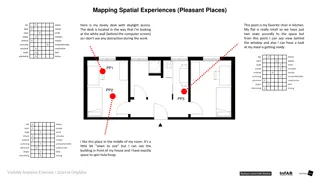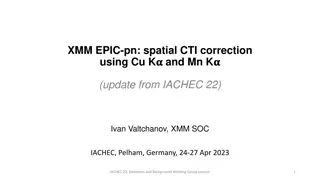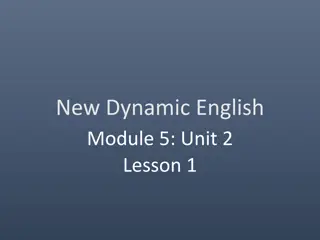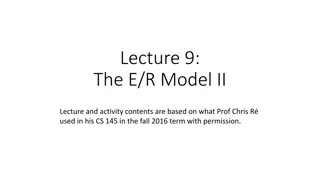Understanding Spatial Relationships in Data Modeling
Explore the concept of spatial relationships within data modeling, focusing on the fully-articulated paths encompassing E4 Period, E53 Place, and E18 Physical Thing. Delve into the implications of properties like P161 has spatial projection and P89 falls within, examining how places are uniquely defined by their reference space.
Download Presentation

Please find below an Image/Link to download the presentation.
The content on the website is provided AS IS for your information and personal use only. It may not be sold, licensed, or shared on other websites without obtaining consent from the author. Download presentation by click this link. If you encounter any issues during the download, it is possible that the publisher has removed the file from their server.
E N D
Presentation Transcript
P156 & P7 as inverse shortcuts C-E Ore, 10.10.2023
P7 as inverse shortcut From the scope note: By the definition of P161 has spatial projection, an instance of E4 Period takes place on all its spatial projections to respective reference systems, that is, instances of E53 Place. Therefore, this property implies the more fully developed path from E4 Period through P161 has spatial projection, E53 Place, P89 falls within to E53 Place, where the intermediate place is also defined in the same geometric system. Both places are defined in the same geometric reference system. The relation between an instance FOL: P7(x,y) ( z,u) [E53(z) E18(u) P157(y,u) P157(z,u) P161(x,z) P89(z,y) ]
P7 took place at (witnessed) P7(x,y) ( z,u) [E53(z) E18(u) P157i(y,z)) P157i(u,z) P161(x,z) P89(z,y) ] If a period took place at a given place, then there exist a place z and a physical thing u such that P161 has spatial projection E4 Period: x E53 Place: z P157i provides reference space for) E18 Physical Thing : u P89 falls within (contains) P7 took place at implies the rest of the diagram E53 Place: y The property P7 took place at (witnessed) is inverse shortcut of the fully-articulated path from E7 Period, P161 has spatial projection, E53 Place, P89 falls within to E53 Place under the condition that the two instances of E53 Place in in the path have the same reference space Comment: Is a place uniquely defined by its reference space?
P7 took place at (witnessed) P7(x,y) ( z,u) [E53(z) E18(u) P157i(y,z)) P157i(u,z) P161(x,z) P89(z,y) ] ( u) [E4(x) P157(x,u) E18(u) E53(y) P157(y,u) E53(z) P157(z,u) E53(v) P157(v,u) P7(x,y) P161(x,z) P89(z,v) P89(v,y) ] P7(x,v)] E18 Physical Thing : u P157i provides reference space for) E4 Period: x P161 has spatial projection E53 Place: z P89 falls within E53 Place: v P7 took place at is implied by the the rest of the (blue) diagram P7 took place at P89 falls within E53 Place: y It is not a shortcut
P156 as inverse shortcut From the scope note: This property is equivalent to the fully developed path from E18 Physical Thing through P196 defines, E92 Spacetime Volume, P161 has spatial projection to E53 Place. However, in contrast to P156 occupies, the property P161 has spatial projection does not constrain the reference space of the referred instance of E53 Place FOL: P156(x,y) ( z) [E18(x) E53(y) P196(x,z) P161(z,y) P157(y,x)]
P156 occupies (is occupied by) P156(x,y) ( z) [E18(x) E53(y) P196(x,z) P161(z,y) P157(y,x)] If a physical thing occupies a place, then there exists a spacetime volume such that E18 Physical Thing: x P196 defines (is defined by) P157 is at rest relative to E92 Spacetime Volume: z P156 occupies implies the rest of the diagram? P161 has spatial projection E53 Place: y P156 is not a shortcut, P157 may be?


